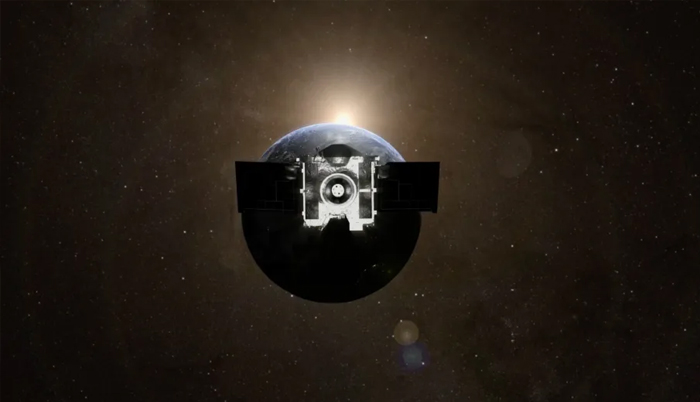![]() Home > Space & Science
Home > Space & Science
NASA's OSIRIS-Rex Successfully Delivers Asteroid Samples Back To Earth

NASA
![]() September 26th, 2023 | 12:52 PM |
September 26th, 2023 | 12:52 PM | ![]() 511 views
511 views
ENGADGET
The mission launched in 2016 to explore Bennu, a near-Earth asteroid.
NASA’s OSIRIS-REx seven-year mission to collect rocks and dust from a near-Earth asteroid is complete. The capsule containing the final samples returned to Earth on the morning of September 24th, touching down in the desert at the Department of Defense’s Utah Test and Training Range at 10:52 am ET.
The device collected around 250 grams of material from a carbon-rich asteroid dubbed “Bennu,” which NASA says hosts some of the oldest rocks in our solar system. The sample gives scientists more information about the building blocks of what planetary makeup looked like 4.5 billion years ago.
Because asteroids are considered to be natural “time capsules” — due to how little they change over time – they can offer researchers a window into the chemical composition of our early solar system and determine whether or not Bennu carried the organic molecules that are found in life. Now that samples are in the hands of NASA scientists, the agency says its researchers will catalog the collection and conduct in-depth analysis over the next two years.
NASA's mission began all the way back in September 2016, launching from Cape Canaveral in Florida. It took just over a year to perform its flyby of Earth before arriving at the Bennu asteroid 15 months later in December 2018. In October 20, 2022, the explorer successfully captured samples from Bennu and began its journey back to Earth on May 10, 2021. Upon its touchdown on September 24th, The Origins, Spectral Interpretation, Resource Identification, Security-Regolith Explorer (OSIRIS-REx's full name) had journeyed 3.9 billion miles.
While NASA’s OSIRIS-REx is not the first attempt a space agency has made to deliver an asteroid sample to Earth, this mission’s rendition has the largest sample size. The Bennu sample is estimated to hold about half a pound of rocky material from the asteroid's surface. In a similar vein, the Japan Aerospace Exploration Agency’s (JAXA) Hayabusa mission delivered specks from an asteroid called Itokawa and in a secondary mission, brought back about 5 grams from another asteroid coined Ryugu in 2021. Japan’s agency shared 10 percent of their samples with NASA at the time. NASA is expected to share a small percentage of its OSIRIS-REx samples from Bennu with JAXA.
While the sample made landfall, NASA’s OSIRIS-REx spacecraft remained in space. It has now set off on a new mission to explore another near-Earth asteroid called Apophis, which NASA says is roughly 1,200 feet (roughly 370 meters) in diameter and will come within 20,000 miles of Earth in 2029.
The new project, dubbed OSIRIS-APophis EXplorer (OSIRIS-APEX), will study changes in the asteroid that experts believed in 2004 had a 2.7 percent chance of hitting Earth. The spacecraft’s gas thrusters will attempt to "dislodge dust and small rocks on and below Apophis’ surface," giving experts data on how asteroid's proximity to Earth affected its orbit, spin rate and surface composition.
Source:
courtesy of ENGADGET
by Malak Saleh | Reporter
If you have any stories or news that you would like to share with the global online community, please feel free to share it with us by contacting us directly at [email protected]